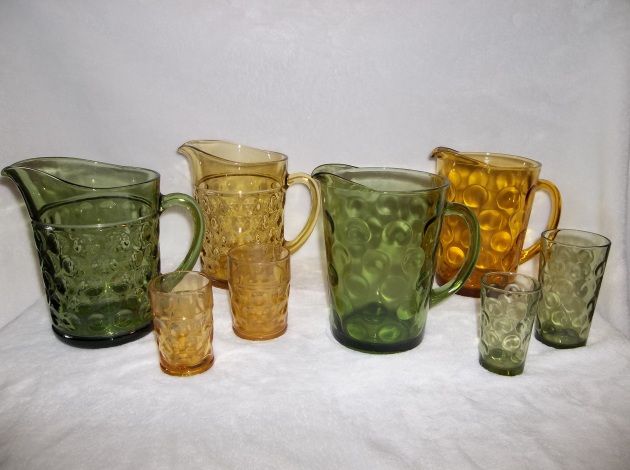Over the years, there have been many books produced for glass collectors. These books attempt to aid glass collectors by verifying information about collectible glass. You would assume that the creators of these books would do diligent research before publishing their books. Because once something is printed in these books, collectors and dealers alike trust it to be fact. But it appears that some of these writers are guessing when it comes to some of their information. The piece of information that seems to be the most critical, but is often listed incorrectly, is the pattern name.
When the proper company designated pattern name is not known to the author, some authors simply make up a name based on the color or shape of the piece. Some books provide names that the author has heard used in collecting circles without confirming them. Sometimes the proper information is unavailable and no amount of research will uncover it. Other times, a quick trip to a glass museum, or a simple internet search, would provide many of the missing details. When the correct information cannot be determined, these authors would do well to list the pattern as name unknown.

When it comes to Hazelware, the most obvious misapplication of a pattern name has to be in the case of Simplicity. For many years, in many editions of glass collecting books, Simplicity has been listed as Colony. The author claimed to have seen this name on label stickers, but this is inconsistent with names printed in Hazelware catalogs and on boxes that are being found with Simplicty printed on them. See the 1966 catalog page above. Once bad information has been printed so many times, no amount of printing the truth will reverse the damage done. Even avid collectors of Hazelware now often refer to Simplicity as Colony. Many have no idea that they were misled.
A search of Hazelware products offered for sale at ebay proves this. Only five listings at the time of this writing properly identified the pattern name as Simplicity. At the same time, there are dozens of Simplicity items offered for sale which are listed as Colony or Colonial.

Another often misidentified product line of Hazelware is Gothic. Though the years, the same series of glass collecting books have reprinted a photo in which a set of Big Top tumblers have been placed into an original Hazelware Gothic box. The box itself contradicts the product inside to the point where the author (or his editor) should have know this was an obvious mistake. Written on the box are the words “13 oz Ice Tea”, as well as “Platinum Banded.” But the Big Top glasses being displayed in this box are a 10 oz size according to the author, and have no platinum band. The photo above, taken from the 1966 Hazelware catalog, shows actual platinum banded Gothic tumblers and the box they came with.
If you care to conduct your own research, try an internet search for Gothic tumblers. You will probably get a few correct hits, (including a link back here). But many of the results will point you to Big Top peanut butter glass.
Another example of mistaken identity is mixing Hazelware Daisy with Indiana Glass Daisy, but we have already written about that in another post. The list could go on and on.
At this website, we are attempting to verify every piece of information that we present. We are researching old news articles, company records, and catalogs for accurate information. We would rather list a pattern name, or any other piece of information as unknown, than to guess or make it up. If we have not listed a pattern on this site yet, it may be because we do not have enough facts to present yet. If you find any type of mistake here, please let us know so that we can correct it immediately.






